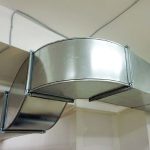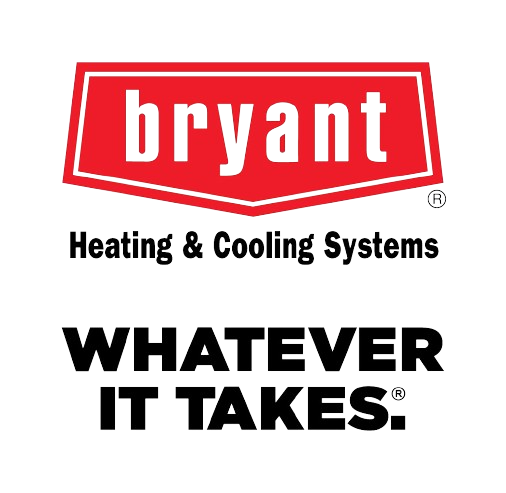Understanding plumbing basics is essential when you’re the head of a household. Don’t panic when an unexpected situation strikes; learn what to do!
Here are a few tips that will help you identify the degree of difficulty of any plumbing issue and determine if you can handle it on your own or call a licensed plumber.
Content Table
Your Must-Have Plumbing Tools
Even if you don’t know much about the subject, performing minor repairs without too much effort is achievable. However, you need the right plumbing tools. Investing in basic house plumbing tools can save you hundreds of dollars in repairs and maintenance in the long run.
- Tongue and groove pliers: Also called pipe or vice grips, are commonly used to grip and turn pipes, nuts, and bolts.

- Drain auger: Also known as a plumbing snake, a drain auger is a coil of metal or plastic piping used to clear blockages in drains and pipes.

- Pipe cutters: Yes, they are used to cut pipes. There are various pipe cutters, each designed for a specific type of pipe.

- Basin wrench: It is a specialized tool for loosening or tightening the nuts and bolts that secure a faucet to a sink.

- Strap wrench: This tool applies torque to an object, such as a pipe or a bolt.

- Plumbers tape: Also known as Teflon tape, is a type of adhesive tape used to create a watertight seal.

- Safety goggles and gloves: These will save you from coming into contact with hazardous materials while performing a plumbing task.

- Plunger: It is used to unclog drains and consists of a handle and a cup-shaped head made of rubber or plastic for suction.

Fixing Common Plumbing Problems
Several problems could affect your home plumbing system, from minor issues like toilet leaks to major ones like no hot water in your house for several days in winter. Recognizing these plumbing issues will help you find solutions as quickly as possible.
Remember, though, that a plumbing emergency can occur anytime, and it is important to recognize when professionals should handle the situation.
Meanwhile, here are some common plumbing problems and how to fix them!
Pleased to Offer Plumbing Services Near You
Dripping Faucets
A drip is not only annoying but also costly. When a home has a leaky faucet, a single one can waste more than 3,000 gallons of water per year, which does not even account for the damage caused by water stains.
To save money and water, it’s important to understand the causes and how to fix a leaky faucet using only the plumbing tools we recommended earlier. Simple fixes can save you about 10% on water bills.
There are several reasons why this plumbing issue can occur, such as:
Valve seat problems
In most cases, a dripping faucet is caused by a problem with the valve seat or washer, which is the metal surface the washer presses against when the valve is turned on.
If the seat is damaged or corroded, it can cause the washer to leak. Over time, sediment can build up on the valve seat, preventing the washer from making a tight seal.
Sediment can also accumulate on the washer itself, causing it to leak. In either case, the solution is to replace the damaged parts.
Fortunately, this is a relatively simple repair that anyone with basic plumbing skills can do.
Sediment buildup and pipe corrosion
Over time, the mineral content of water can lead to a buildup of sediments in your pipes. This can cause your faucet to drip, and it may also reduce water flow.
In addition, the sediments can contribute to corrosion, weakening your pipes and leading to leaks.
If you suspect that mineral deposits are the cause, you can clean the sediments out of the pipes yourself to fix the dripping faucet. However, if the problem is severe, you may need to call a plumber.
In either case, addressing the problem immediately is important to prevent further damage.
Loose O-ring
If your faucet drips, there’s a good chance the O-ring is loose. The O-ring is a small but important component of the faucet. It helps to provide a seal between the valve seat and the spray head.
Over time, however, the O-ring can become worn or damaged, causing it to lose its ability to create a tight seal. As a result, water will leak out around the edges of the valve seat and drip from the spout.
Fortunately, this problem can be easily fixed by replacing the O-ring. Most hardware stores sell O-rings in various sizes, so you should be able to find one that fits your faucet.
Once you have the new O-ring, simply remove the old one and install the new one using your new plumbing tools.
Leaking Pipe
Leaking pipes are a common problem in both residential and commercial properties. While a small leak may not seem like a big deal, putting off pipe leak repair can cause significant damage to your property and lead to high water bills.
Pipes can leak for several reasons, like:
Excessive water pressure
One of the most common causes of leaking pipes is excessive water pressure. When water pressure is abnormally high, it stresses the pipes and can cause them to rupture. This can lead to serious damage to your home, wasted water, and higher utility bills.
There are several ways to tell if the force of water is too high, like if you notice that your faucets are dripping or that your shower head is leaking.
You can also check the pressure by attaching a gauge to an outside faucet. If the reading is above 60 PSI, the flow is excessive, and you should have it checked by a professional.
Persistent clogging
Clogs can be caused by many different things, such as grease, hair, soap scum, and even food scraps. When these things build up in your pipes, they can restrict the water flow and eventually cause a blockage.
If the clog is severe enough, it can cause your pipes to leak. A leaking pipe can damage your home, contaminate your drinking water, and even cause mold growth.
Cracked pipes
Cracks in pipes or seals are the most common cause of leaks, which can occur for various reasons.
Poorly-made pipes or fittings are more susceptible to cracking, as are pipes damaged by corrosion or physical impact.
In addition, extreme temperature changes can cause even well-made pipes to expand and contract, eventually causing them to develop cracks.
If you suspect a leaking pipe, it’s important to have it checked out as soon as possible. A qualified plumber can quickly identify the source of the leak and make the necessary repairs with the proper plumbing tools.
Toilet Problems
If you’ve ever had a problem with toilet leaks, you know how frustrating it can be. But what causes these leaks in the first place? Let’s look at some of the most common causes of leaking toilets and how to fix them.
Problems with the fill valve
A toilet fill valve is a device that controls the flow of water into the toilet tank. It is typically located near the bottom of the tank and is connected to the water supply line.
This valve regulates the amount of water that enters the tank, ensuring that the tank always has enough water to flush and preventing leaking toilets.
However, if the fill valve is not working properly, it can cause many toilet flush problems. For example, if the valve is stuck open, water will continuously flow into the tank, resulting in higher water bills.
Additionally, if the valve is not completely closed, water can leak from the tank, damaging the floor and surrounding areas.
If you are experiencing any of these problems, you must call a plumber as soon as possible to have the fill valve repaired or replaced.
Problems with the flapper
A flapper is a small rubber disc that fits over the drain at the bottom of the toilet tank. When you flush the toilet, the flapper lifts up, allowing water to flow from the tank into the bowl. The flapper then falls back into place, sealing off the drain.
If your toilet is constantly running or filling very slowly, you likely have a problem with your flapper. In most cases, replacing a flapper is a simple fix that can prevent significant water loss.
Leaky flush valve
Toilet leaks might be due to a problem with the flush valve. This part of the toilet controls water flow into the bowl. When the valve gets old or wears out, it can cause leaking toilets.
If your toilet leaks from the tank, it is probably because the flush valve needs to be replaced. Fortunately, this leaking toilet problem requires a relatively easy repair, which you can do alone.
Simply turn the water off to the toilet and remove the tank lid. Next, use a screwdriver to remove the screws that hold the flush valve in place.
Once the screws are removed, you should be able to lift out the old valve and replace it with a new one. Then, reassemble everything and turn the water back on.
No Hot Water?
Have you ever turned on the shower only to be met with an icy blast? Or maybe you went to wash your hands only to find that the water from the faucet was barely lukewarm.
If you’ve ever experienced this plumbing problem, you know how frustrating it can be to have no hot water in the house.
The good news is that there’s usually a simple explanation for not having no hot water. Let’s examine some possible causes!
Sediment in the water heater
Over time, water’s natural minerals and sediment will collect at the bottom of a heater’s tank. This can cause many problems, including decreased efficiency, corrosion, and leaks.
As the sediment accumulates, it reduces the amount of space available for water, meaning that the heater will have to work harder to heat the same amount. This can increase energy bills and cause wear and tear in the unit.
In addition, the sediment can act as an insulator, trapping heat inside the tank and causing it to overheat. If left unchecked, this can lead to serious damage to the unit.
Incorrect heater size and pressure
One of the most common heater problems is incorrect size or pressure. If the unit is too small, it will not be able to heat all the water in the tank properly.
This can lead to lukewarm showers, higher energy bills, and long wait times for water to heat up.
If it is too big, it can cause overflows and damage the plumbing. In addition, if the force of water is too high, it can cause leaks and bursts in the pipes.
To determine the right size for your needs, here are the required gallons by average based on the number of family members in your home.
- 1-2 people: at least 30 gallons
- 3 people: 40 gallons
- 4 people: 40 to 50 gallons
- 5 or more people: 50 to 80 gallons
If you’re still unsure what heater size you need, consult a professional to install it. They can properly assess your needs and ensure that your unit is the correct size and pressure.
Problems with the thermostat
If your water heater isn’t working properly, it may be due to a problem with the thermostat. The thermostat regulates temperature, so if it’s not working correctly, the water can become too hot or too cold.
In some cases, the thermostat may need to be replaced. However, sometimes, simply recalibrating it can fix the problem. Call a plumber for assistance if you’re unsure how to do this.
Water heater failure
A complete failure can happen due to several factors, including a build-up of sediment in the tank, a faulty heating element, or even a leak in the tank itself. When a heater fails, it can leave homeowners without heated water and a hefty repair bill.
That’s why it’s important to be familiar with the warning signs of a failing heater, such as rust-colored water, strange noises, or increasing utility bills.
By catching the problem early, you can often avoid a complete system breakdown and save yourself a lot of money and frustration.
Sewer Problems
The sewer line carries all the wastewater from your home—including toilet waste, sink and shower drain water, and laundry water—to the municipal sewer system or septic tank.
The sewer consists of the main line and the lateral line. The main line is the larger pipe that carries wastewater from your home to the municipal system.
The lateral sewer line is the smaller pipe connecting your home to the main line. Proper maintenance is essential to keeping it in good working order.
Here are some common causes of sewage problems:
Flushing foreign objects down the drain
Many items, from cooking grease to paper towels, should never be flushed down the toilet or poured down the sink. When these items enter your sewer line, they can cause a blockage that leads to sewage backups, overflows, and costly repairs.
To avoid these problems, it’s important to flush toilets with human waste and toilet paper only.
When it comes to your kitchen sink, properly dispose of cooking grease in the trash can rather than pouring it down the drain.
if your drains are completely clogged, you won’t be able to solve this problem yourself. Call in a certified plumbing professional immediately to help you resolve the issue with their advanced plumbing tools.
Plant roots in the pipe
Trees and other plants constantly search for new water sources, and your sewer is an ideal target. Once roots break through the pipe, they grow, causing further damage and blockages.
In some cases, tree roots can even cause the pipe to collapse entirely. This is a messy and costly repair, and it can also lead to raw sewage spilling into your home or yard.
If you suspect tree roots are causing sewer line problems, a professional must assess the situation immediately.
Essential Plumbing Maintenance Tips
It’s easy to take your house plumbing for granted until something goes wrong – but luckily, problems can be avoided by following these basic home maintenance tips!
Don’t flush foreign objects
Toilets can be prone to problems if foreign objects are flushed. Objects such as paper towels, feminine hygiene products, and toys can cause toilets to become clogged.
In addition, these objects can damage the septic system or cause other problems with the plumbing.
It is important to be careful about what you flush down the toilet. If you have doubts about whether an object will flush properly, it is best to dispose of it in another way.
Keep drains clean
Over time, drains can become clogged with hair, soap scum, and other debris. If left untreated, these clogs can quickly become major blockages that are difficult and expensive to repair.
To avoid this problem, it is important to clean your drains regularly.
There are many ways to do this, but one simplest is to pour boiling water down the drain once a week. This will help to dissolve any build-up and keep your drains flowing freely.
In addition, it is a good idea to use a drain screen to catch potential objects before they cause blockages. Remember to clean these screens regularly to prevent water backups in the sink.
Check for water leaks
Water leaks can be a big problem in any home. They cannot only lead to higher water bills but also cause serious damage to your plumbing system. That’s why it’s important to check for leaks regularly and have them repaired as soon as possible.
There are several easy ways to check for leaks. One is to look for wet spots on your floors or walls.
Another is to listen for running water, even when all your taps are turned off. If you suspect a leak, you can also check your water meter. If it shows that water is flowing even when all your faucets are turned off, there’s likely a leak somewhere in your system.
If you find a leak, it’s important to have it repaired as soon as possible. Plumbing leaks can cause problems, from mold and mildew growth to serious structural damage. You can avoid these costly repairs by taking care of the problem right away.
Check water pressure
If the force of water is too high, it can strain pipes and cause them to leak or burst. On the other hand, if the water flow is too low, it can lead to problems with your water supply.
Fortunately, checking your water pressure is easy and only takes a few minutes. Simply attach a pressure gauge to an outside faucet and turn it on. The gauge will show you the current flow strength, which should be between 40 and 60 PSI.
If it’s below 40 PSI, you may need to adjust your water pressure regulator. If it’s above 60 PSI and you don’t have a regulator, contact a plumbing professional to install one.
The importance of preventive plumbing maintenance
Regular maintenance is important to the longevity and proper function of your home’s plumbing system.
By regularly having a plumbing contractor inspect pipes, drains, and fixtures, you can identify potential problems early on and prevent them from becoming major issues.
Additionally, preventive maintenance can help extend the life of your plumbing system by keeping it clean and free of buildup.
While it may seem like a hassle or an unnecessary expense, regular plumbing maintenance is an important part of owning a home. Investing in preventive maintenance now can save you time, money, and aggravation down the road.
Plumbing Do’s and Don’ts
As a homeowner, you are responsible for maintaining your plumbing system. This includes taking steps to prevent house plumbing problems and addressing them promptly if they do occur.
Although most problems can be handled by a professional, there are a few simple tasks every homeowner should know how to do.
Here are some plumbing dos and don’ts to follow:
DO
DO use full-pressure water when running the garbage disposal
One common mistake is using low-flow water when running the disposal. This can cause food and other debris to become stuck in the blades, leading to clogs and jams. Instead, use full-pressure water to ensure it operates correctly.
DO pour boiling water down the shower and sink drains monthly
Pouring boiling water down your shower and sink drains every month is a simple and effective way to help prevent clogs. The water helps to break down any soap scum, hair, or grease that has accumulated in the drain while killing bacteria that can cause odors.
DO put a few pieces of ice in the garbage disposal
An easy way to keep your disposal working properly is to regularly put in a few pieces of ice and run it. The ice helps to sharpen the blades and remove any built-up debris.
DO cover tub and sink drains with screens
Hair can quickly build up and cause a blockage; to prevent this, it’s important to keep drains covered with screens. This way, hair will be caught by the screen before it can go down the drain.
DON’T
DON’T throw oil, grease, coffee grounds, corn husks, or vegetable skins down the garbage disposal
One common mistake is using low-flow water when running the disposal. This can cause food and other debris to become stuck in the blades, leading to clogs and jams. Instead, use full-pressure water to ensure it operates correctly.A garbage disposal can be a convenient way to get rid of food scraps, but there are some things you should never put down the drain. To avoid problems, only put small amounts of soft food waste in the disposal.
DON’T dispose of personal care products in the toilet
One of the most common mistakes people make with their toilets is disposing of personal care products; absorbent materials can quickly cause a clogged toilet and serious backups.
DON’T use a drain cleaner if drains are entirely clogged
Usually, a clogged drain can be easily fixed with a plunger, but it’s important not to reach for chemical drain cleaners immediately if it doesn’t. Drain cleaners are designed to break up small blockages but can worsen a clog by pushing the material further down the drain.
In this case, your best bet is to call a professional plumber.
Frequent Questions About Plumbing Fixes
There are a few options you can try before calling a professional:
- Use a plunger
- Introduce a toilet auger
- Pour dish soap and hot water in the toilet bowl
- Mix baking soda and vinegar
- Try an enzyme-based drain cleaner
- If none of these work, call a plumber
Try the following steps:
1. Turn off the water flow
- Shut off the valves under the sink
- Open the faucet to drain any remaining water
2. Plug the drain
- Use a sink plug or rag to prevent losing small parts.
3. Disassemble the faucet
- Compression faucet: Remove the handle, packing nut, and stem. Replace the washer or O-ring.
- Ball faucet: Remove the handle, cap, collar, ball, cam and seals. Replace the seals and springs.
- Cartridge faucet: Remove the handle, retaining clip, or nut and cartridge. Replace the O-rings.
- Ceramic disk faucet: Remove the handle and ceramic disk cylinder. Replace the seals.
4. Reassemble the faucet
- Reassemble in reverse order
- Turn on the water supply and test the faucet
- If you still end up with a dripping faucet, call a professional
Consider the following possibilities:
- Clogged pipes
- Faulty fixtures
- Leaking pipes
- Pressure regulator issues
- Closed or partially closed valves
- Municipal water supply problems
- Corroded plumbing
- Water heater issues
There can be many reasons for running toilets, but these are some of the most common:
- Faulty flapper: It might not seal properly, allowing water to leak from the tank to the bowl
- Chain issues: The chain connecting the flapper to the flush handle might be too short or tangled, preventing the flapper from sealing.
- Float problems: It could be set too high, causing the water level to rise above the overflow tube and continuously drain.
- Worn-out fill valve: This could be faulty or worn out, causing it to refill the tank constantly.
- Overflow tube Issues: The tube can be cracked or improperly positioned, causing water to flow continuously into the bowl.
- Misaligned flush: The handle could be loose or misaligned, preventing the flapper from closing properly.
These quick guides can help you diagnose your water heater:
- No power to the heater
- Faulty thermostat
- Sediment build-up
- Broken electric or gas water heater
- Faulty dip tube
- Water heater size
- Temperature pressure relief (TPR) valve issue
- Leaking heater
These basic steps can save you hundreds in repairs, so read carefully:
1. First, locate the main water shutoff valve and turn it off to stop the flow of water to the pipe.
2. Open the faucets to drain any remaining water.
3. Inspect the pipe to find the exact location of the leak.
4. You can try some of the following temporary fixes while you wait for a professional plumber to arrive:
- Pipe clamps
- Epoxy putty
- Pipe tape
5. Or, if you’re feeling confident, try replacing the damaged section yourself:
- Materials needed: Pipe cutter, replacement pipe, pipe connectors, pipe wrench, plumber’s tape.
- Steps:
i. Cut out the damaged section of the pipe using a pipe cutter.
ii. Measure and cut a new section of pipe to fit.
iii. Connect the new section using pipe connectors, applying the plumber’s tape to the threads for a secure seal.
iv. Tighten the connections with a pipe wrench.
6. Slowly turn on the main water valve and check for leaks.
7. Inspect the repaired section for any signs of leaks. If no leaks are present, the repair is complete.
Any plumbing issue that could harm your property, compromise your safety, or interfere with the essential water services constitutes a plumbing emergency. For example:
- Burst pipes
- Severe leaks
- Clogged drains
- Overflowing toilet
- No hot water in your house
- Sewage backup
- Gas leaks
- Frozen pipes
- Sewer lines break, collapses, or blockages
Moving Forward
Being prepared and equipped to handle minor issues and plumbing emergencies can significantly prevent major consequences. Have the right plumbing tools to fix dripping faucets and leaking toilets, and know when to leave it to professionals. Consider the preventive measures and opt for regular maintenance; your plumbing system will last long.
Now, you know how to save money by reacting to emergencies. When in doubt, shut off the water supply and call a plumber immediately to minimize damages.

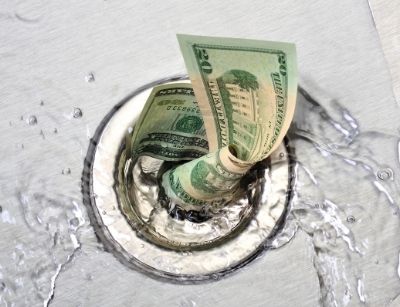
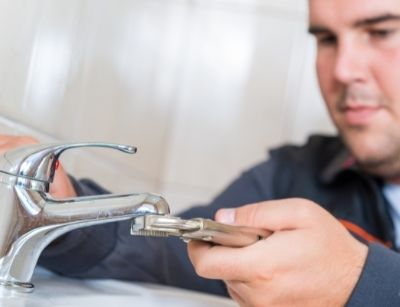
 Humming sounds can occur in the pipes and be quite persistent if there is a constant issue. This often happens if the
Humming sounds can occur in the pipes and be quite persistent if there is a constant issue. This often happens if the 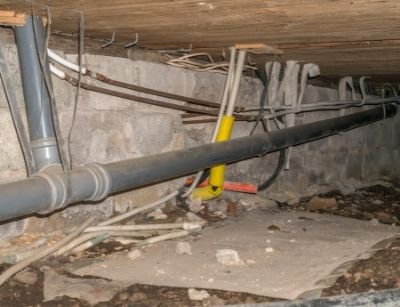 In addition to humming and whistling, a
In addition to humming and whistling, a 




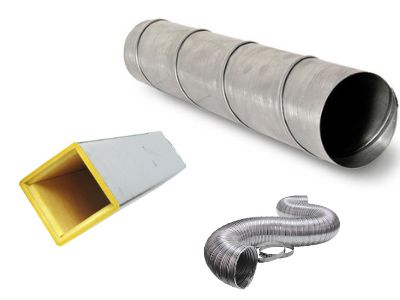 As originally stated, there are four common types of ductwork designs: flexible ductwork (which is also a category), sheet metal ducts, fiberglass lined ducts, and fiberboard air ducts. The last three types fall under the rigid category.
As originally stated, there are four common types of ductwork designs: flexible ductwork (which is also a category), sheet metal ducts, fiberglass lined ducts, and fiberboard air ducts. The last three types fall under the rigid category. 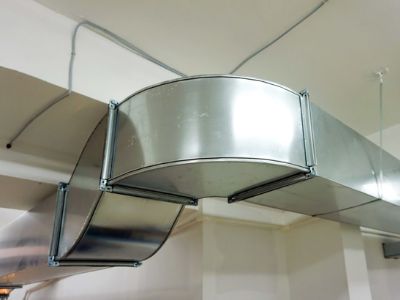 The most common type of air duct design to be installed is the sheet metal air duct. These ducts have a non-porous nature that prevents them from
The most common type of air duct design to be installed is the sheet metal air duct. These ducts have a non-porous nature that prevents them from 
